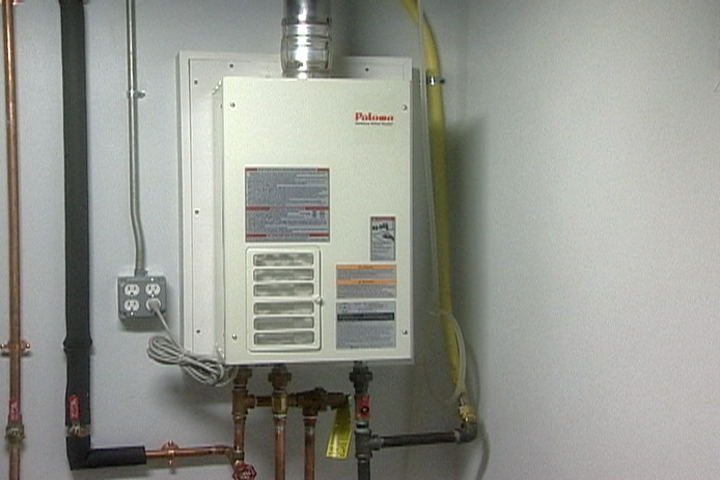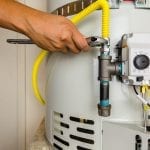In this article further down you can get more superb resources related to What Kind of Maintenance Do Water Heaters Need?.

Warm water is necessary for everyday convenience, whether it's for a rejuvenating shower or washing recipes. To guarantee your hot water system runs efficiently and lasts much longer, regular upkeep is essential. This article gives functional suggestions and understandings on exactly how to maintain your home's warm water system to avoid interruptions and expensive repairs.
Intro
Maintaining your home's warm water system might appear daunting, yet with a few straightforward steps, you can guarantee it operates efficiently for years to find. This guide covers every little thing from understanding your warm water system to DIY maintenance pointers and knowing when to call professional aid.
Significance of Maintaining Your Warm Water System
Regular maintenance not just prolongs the lifespan of your warm water system however additionally ensures it runs efficiently. Disregarding maintenance can result in lowered effectiveness, higher power expenses, and even early failure of the system.
Indications Your Warm Water System Needs Upkeep
Recognizing when your warm water system requires attention can stop significant issues. Watch out for indicators such as inconsistent water temperature level, strange noises from the heating unit, or corroded water.
Understanding Your Hot Water System
Before diving right into maintenance tasks, it's handy to understand the fundamental elements of your warm water system. Typically, this consists of the hot water heater itself, pipelines, anode rods, and temperature controls.
Regular Monthly Upkeep Tasks
Normal month-to-month checks can assist capture small concerns before they escalate.
Flushing the Water Heater
Purging your hot water heater gets rid of sediment buildup, improving effectiveness and extending its life.
Monitoring and Changing Anode Rods
Anode poles protect against corrosion inside the tank. Examining and replacing them when worn is vital.
Inspecting and Adjusting Temperature Setups
Adjusting the temperature level setups makes certain optimal performance and safety.
DIY Tips for Upkeep
You can perform numerous upkeep jobs yourself to maintain your warm water system in leading problem.
Checking for Leaks
Frequently examine pipelines and connections for leaks, as these can lead to water damage and greater costs.
Checking Pressure Alleviation Valves
Evaluating the pressure relief valve guarantees it works properly and avoids excessive pressure buildup.
Insulating Pipelines
Shielding warm water pipes reduces warm loss and can save power.
When to Call a Specialist
While do it yourself maintenance is advantageous, some issues require specialist expertise.
Facility Problems Requiring Specialist Assistance
Instances consist of significant leakages, electric problems, or if your hot water heater is constantly underperforming.
Routine Expert Upkeep Perks
Professional upkeep can include comprehensive examinations, tune-ups, and making sure conformity with safety criteria.
Final thought
Normal maintenance of your home's warm water system is necessary for efficiency, longevity, and expense savings. By complying with these tips and recognizing when to seek specialist help, you can ensure a trustworthy supply of hot water without unanticipated disruptions.
How to Maintain an Instant Hot Water Heater
Before tinkering with your hot water heater, make sure that it’s not powered on. You also have to turn off the main circuit breaker and shut off the main gas line to prevent accidents. Also turn off the water valves connected to your unit to prevent water from flowing into and out of the appliance. 2. When you’re done, you have to detach the purge valves’ caps. These look like the letter “T†and are situated on either side of the water valves. Doing so will release any pressure that has accumulated inside the valves while at the same time avoid hot water from shooting out and burning your skin. 3. When the purge valves’ caps are removed, you have to connect your hosing lines to the valves. Your unit should have come with three hoses but if it didn’t, you can purchase these things from any hardware or home repair shops. You can also get them from retail stores that sell water heating systems. Read the user’s manual and follow it to complete this task properly. When the hosing lines are connected, open the purge port’s valves. 4. You should never use harsh chemical cleaners or solutions when cleaning your unit. Make use of white vinegar instead. It should be undiluted and you’ll probably use about 2 gallons. 5. Now flush your water heater. This task should probably take about 40 minutes. We can’t give you specific directions for this because the procedure is carried out depending on the type, model and brand of your heater. With that being said, refer to the user’s manual. 6. When you’re done draining the unit, you have to turn off the purge port valves again. Remove the hosing lines that you earlier installed on each of the water valves. Put the valve caps (purge port) back in their respective places and be very careful so as not to damage the rubber discs that are found inside these caps. 7. Now that everything’s back in place, check your user’s manual again to find out how to reactivate your water heating system. 8. Once it is working, turn one of your hot water faucets on just to let air pass through the heater’s water supply pipes. Leave the tap on until water flows smoothly out of it. https://www.orrplumbing.com/blog/2014/september/how-to-maintain-an-instant-hot-water-heater/

I'm very curious about Tips on Maintaining a Water Heater and I'm hoping you enjoyed reading the new blog post. Sharing is good. You just don't know, you may very well be doing someone a favor. I truly appreciate your readership.
Call Us Now
 Jake Lloyd Then & Now!
Jake Lloyd Then & Now! Gia Lopez Then & Now!
Gia Lopez Then & Now! Sydney Simpson Then & Now!
Sydney Simpson Then & Now! Karyn Parsons Then & Now!
Karyn Parsons Then & Now! Ryan Phillippe Then & Now!
Ryan Phillippe Then & Now!